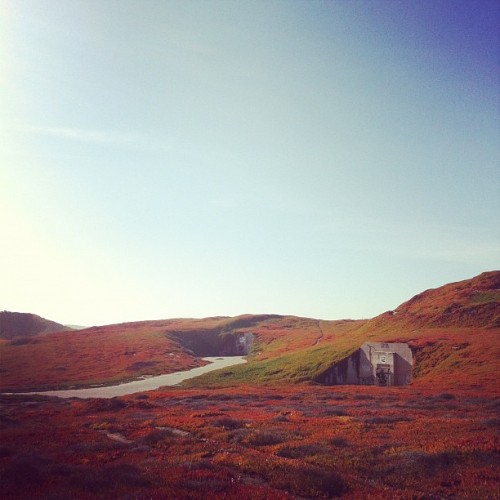
There are upon this earth a great number of places where there is beauty to be found in the intersection of the human and the natural. There is urban decay, where manmade structures are gradually reclaimed by the elements, the thing around which urban exploration revolves. There is the landscape redefined, modernized, the urban landscape. And then there is something else, something that encompasses that and more, something that is in a way their opposite, at least as a manner of perception. The anthropogenic landscape is one that seems now natural to us. Of course everything has to some degree been touched or altered by human actions; the pristine is now rare, valued, and, in many cases, on its way to becoming commoditized.
Where man has been, it tends to leave an indelible mark (though that too is subject to temporal perspective). It is often on the overlooked fringes of ordinary civilization and in its in-between spaces that the most unexpected things might be found. It’s the sparsely-populated stretches between cities and towns, it’s the desolate-looking land peppered by isolated industrial complexes. It’s the pin-straight best soccer predictions lines of a planted forest, the threads of roads snaking across the desert, the carven bulk of a terraced mountainside. Or perhaps on a smaller scale, it’s where tire tracks appear in gravel or a cluster of rubbish bins sit in a field, where a house sits perched on the top of the bluff.
Anthropogenics curates images of these places, “depicting the human-made, human-marked, post-natural, contemporary landscape,†framing the ordinary in such a way as to make them appear to be more than that. Its collection, it says, is “borne of the belief that “pretty†landscapes lack interest… the appeal of landscapes and photographs of landscapes is in the ways in which humanity has altered, or even created, them, not the ways in which we find them pleasing to the eyes.†While it might not be entirely fair to say that the unaltered landscapes conventionally prized for being aesthetically pleasing “lack interest,†it is undeniable that they receive far more attention than the human-affected. Pristine alpine meadows and city skylines alike have been much photographed in their many iterations. What lies in between often goes ignored, which Anthropogenics seeks to remedy.
The public contributes images through their Flickr pool, where more images can be found.


Leave a Reply
Be the First to Comment!